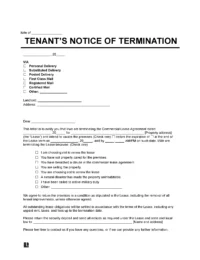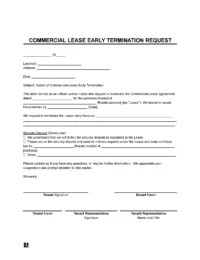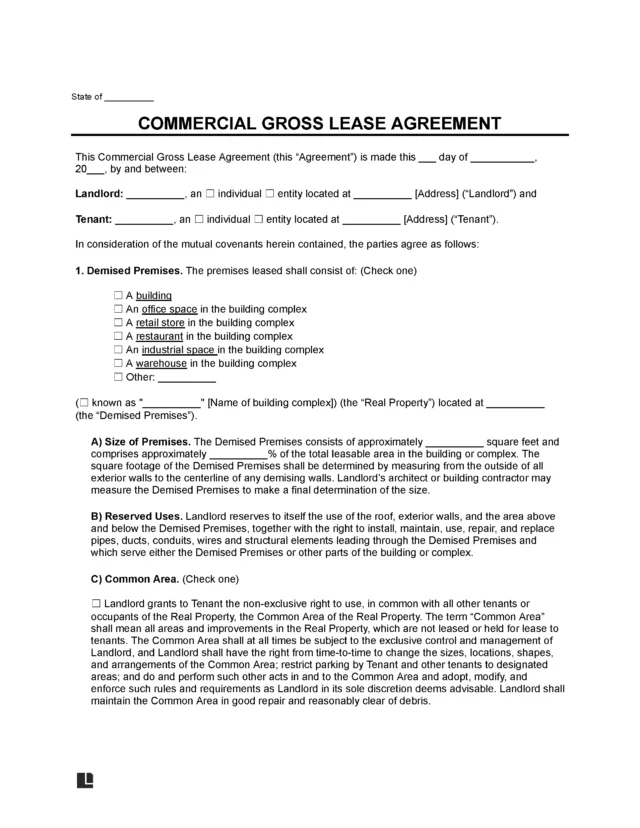What Is a Commercial Lease Termination?
A commercial lease termination letter is a notice from the landlord or commercial tenant stating the end of the lease. It explains the reasons, terms, and details of the termination process. This document protects the rights of both parties and ensures a smooth transition.
A termination letter can be legally binding if it meets the following requirements:
- Honors the notice period and delivery processes in the lease
- Includes terms agreed upon by both parties
- Complies with local commercial lease laws
Use Legal Templates’s commercial lease termination letter to record the end of the lease. Our easy-to-use form offers customizable sections to meet your needs.
Commercial Lease Termination Letters – By Type
The requirements may vary depending on which party writes the letter. View the different types of letters for the necessary format and information.
Commercial Lease Termination Letter to Tenant
Send this letter to your landlord if you're a tenant looking to terminate your commercial lease.
Commercial Lease Termination Letter to Landlord
Use this letter if you're a tenant looking to end your commercial lease.
Commercial Lease Early Termination Letter
Use this letter to inform your business's landlord that you want to end your lease early.
Reasons to Terminate a Commercial Lease
Sometimes, the current arrangement no longer benefits the parties involved. The most common reasons to end a commercial lease include:
- Lease expiration date: If either party doesn’t wish to renew, they can send a notice to communicate that the contract will end on the expiration date.
- Violation of terms: Any breach of the lease terms is grounds for termination. This may include tenants not paying rent or causing damage. It may also include the landlord not performing maintenance or providing proper conditions.
- Mutual agreement for early termination: Sometimes, both parties negotiate a deal or mutually agree to end the lease early.
- Landlord buy-out: In a buy-out, the landlord pays a fee to the tenant in exchange for an early move-out. This fee is usually noted in the original lease, and a buyout allows the landlord to sell the property or find a new tenant.
- Bankruptcy: If the business or landlord becomes bankrupt, the lease terminates because they can no longer own the property or pay rent.
How to Write a Commercial Lease Termination Letter
A commercial lease termination must have the proper formatting, considerations, and information. Write a legally binding termination letter for commercial property with the following steps:
- Identify the creator: State whether the landlord or tenant is initiating and writing the letter.
- Set the end date: Provide details on when the lease agreement will end. This can occur at the end of the lease period or at a specific date for early termination.
- Include the reason for termination: Communicate the reason, such as lease violations, poor conditions, or a landlord buy-out. Add documentation, such as financial statements, communications with the landlord, or photos of the property’s condition.
- Lease details: Identify the property in the lease being terminated. Record the complete address and provide the start and end dates of the original commercial lease agreement.
- Add tenant and landlord information: Provide the full names, business titles, addresses, and contact information.
- Finalize the agreement: Note the forwarding address, proof of service, and date. Deliver the termination letter to the affected party and outline the next steps for move-out.
Sample Commercial Lease Termination Letter
View our free commercial lease termination letter below for the formatting, terms, and sections needed. Our sample document includes customizable terms and is downloadable in PDF and Word format.










